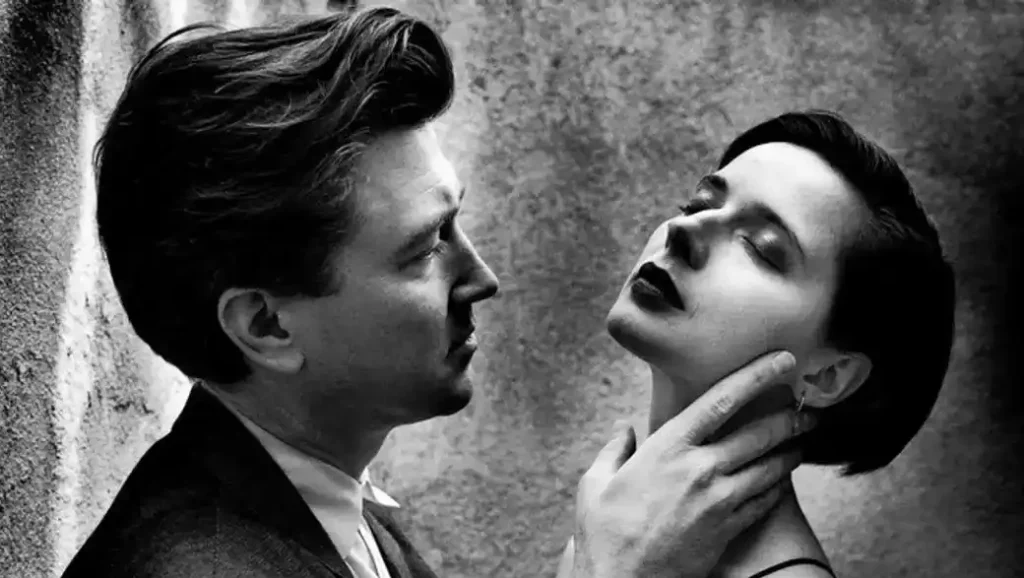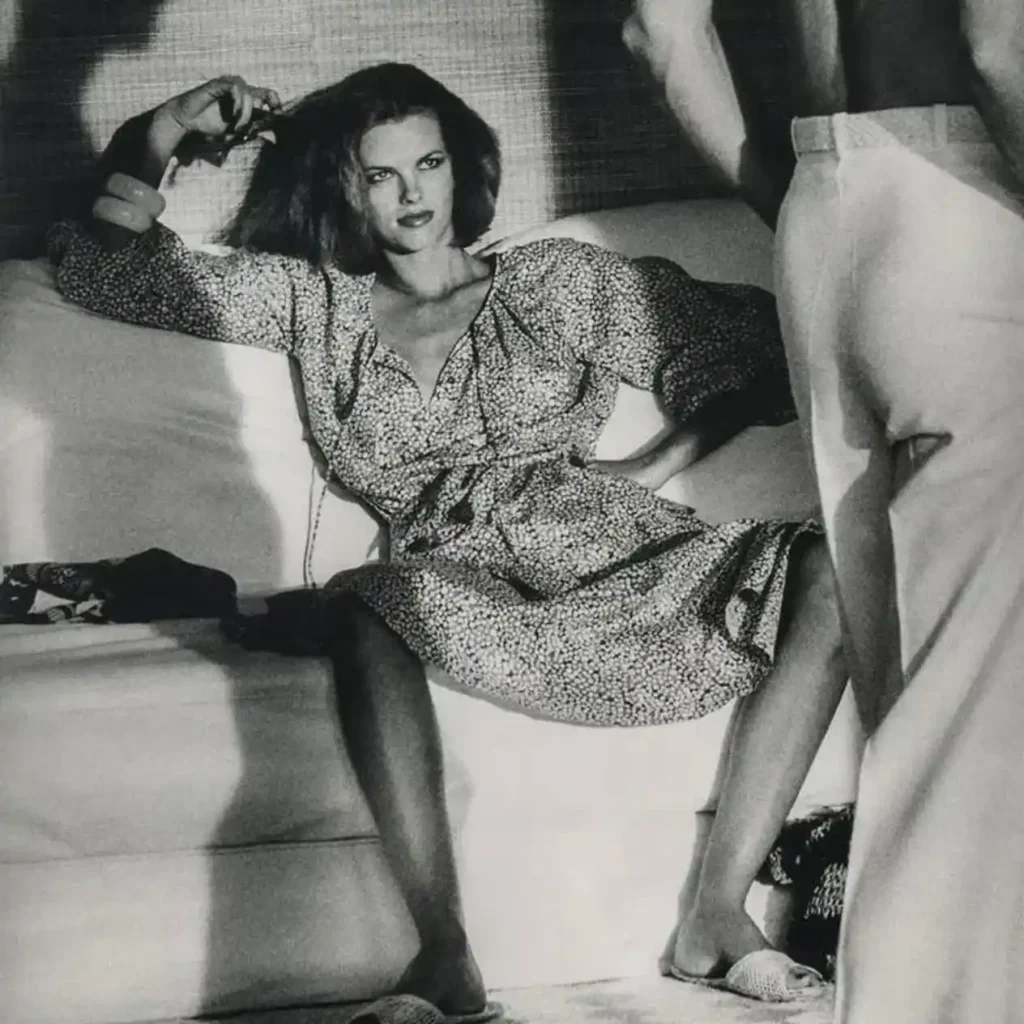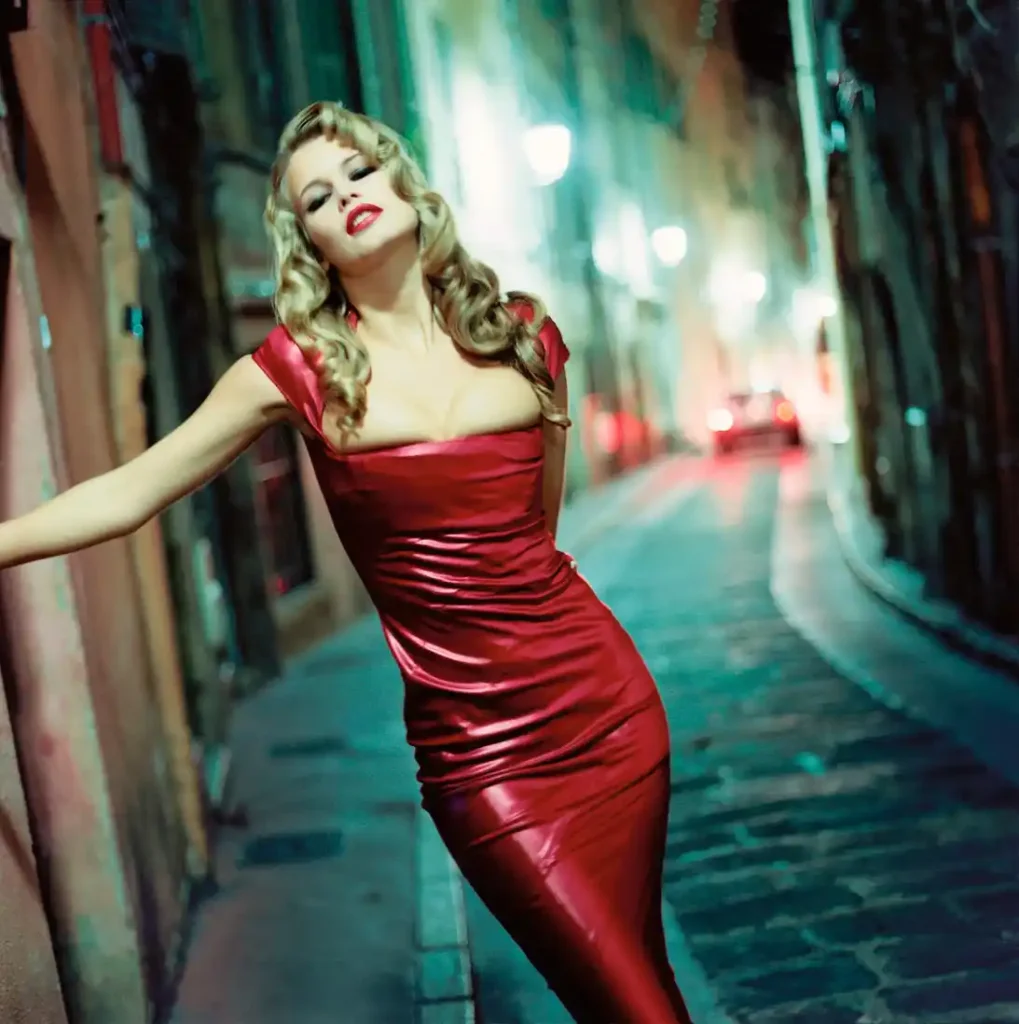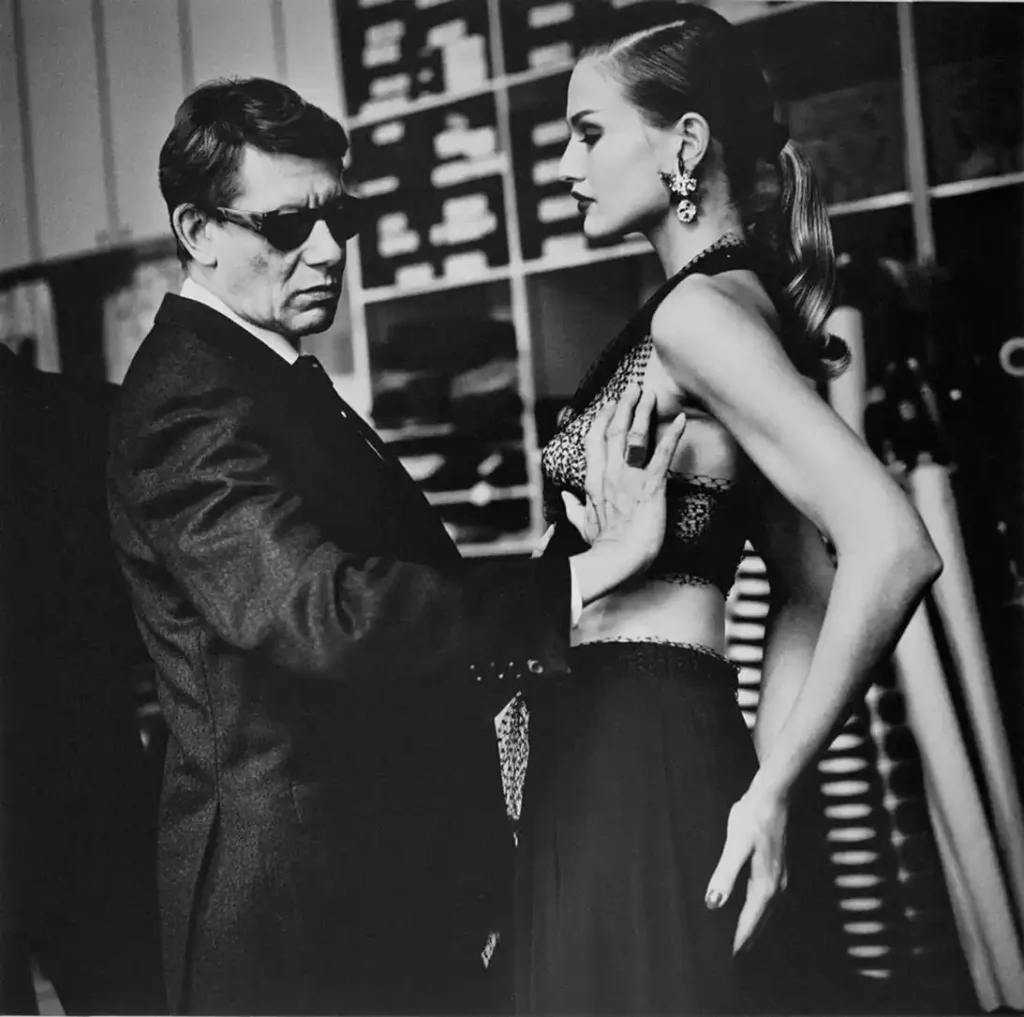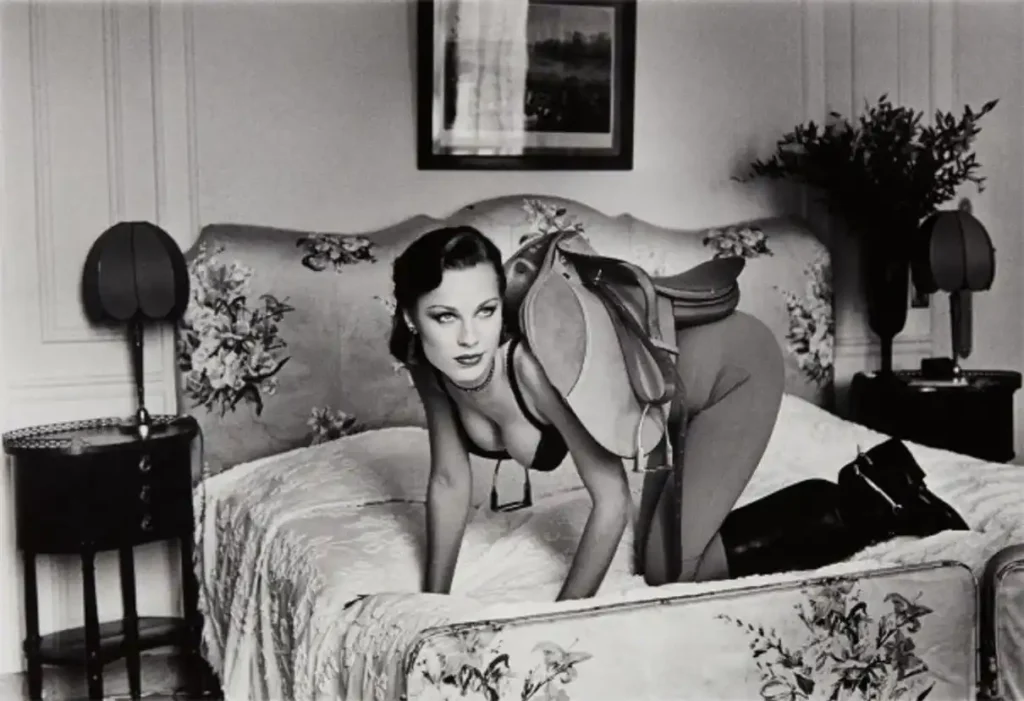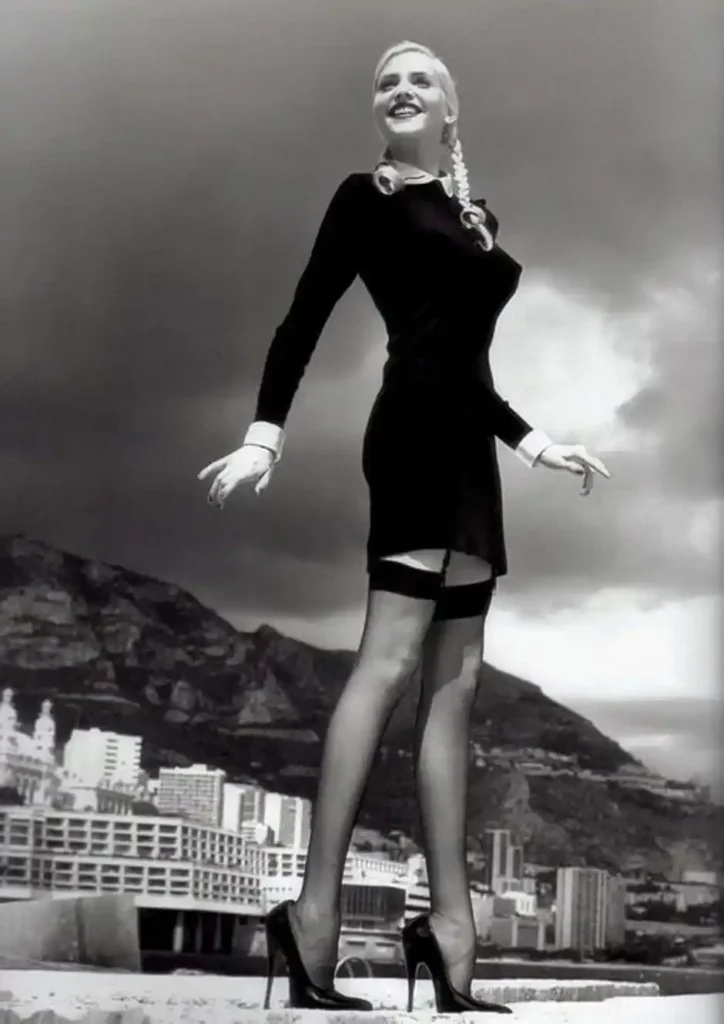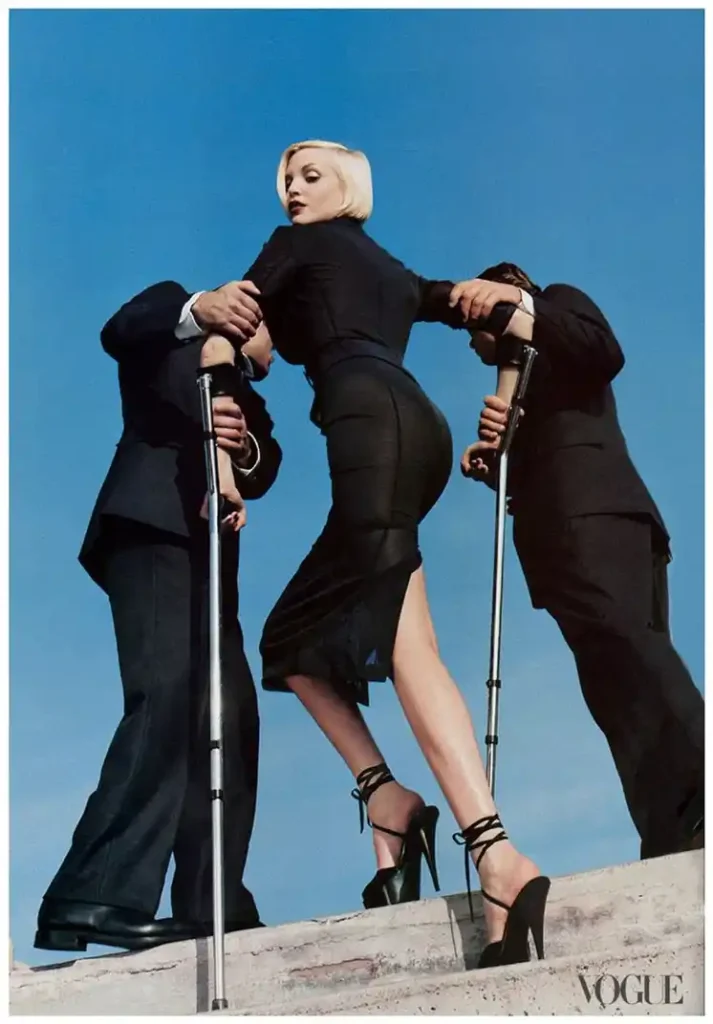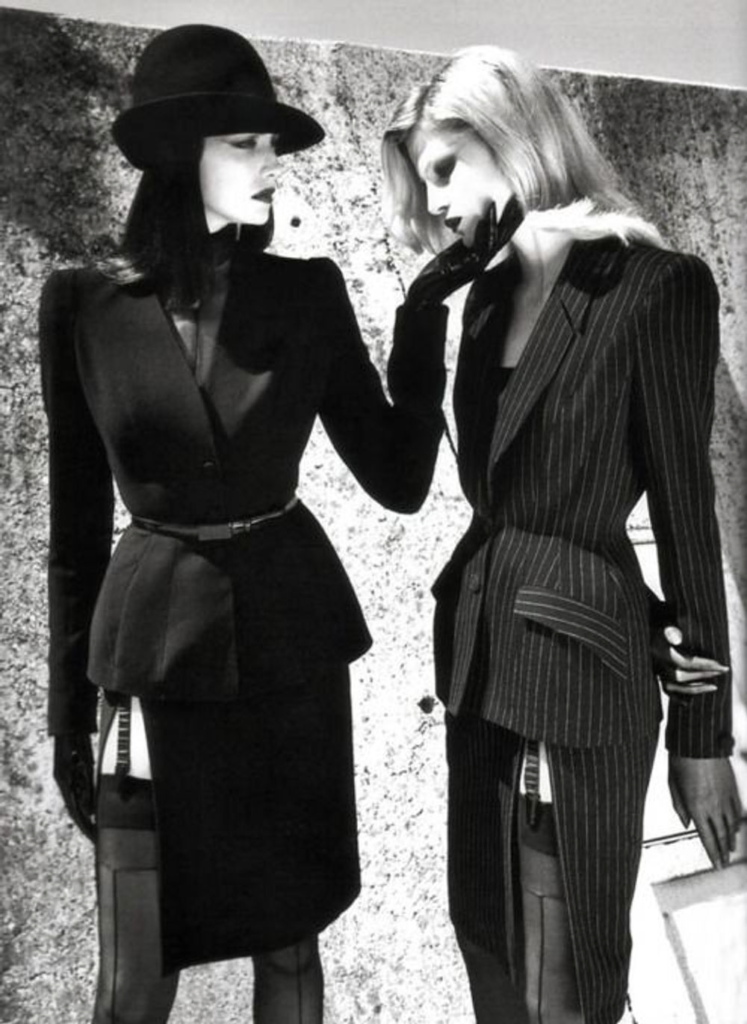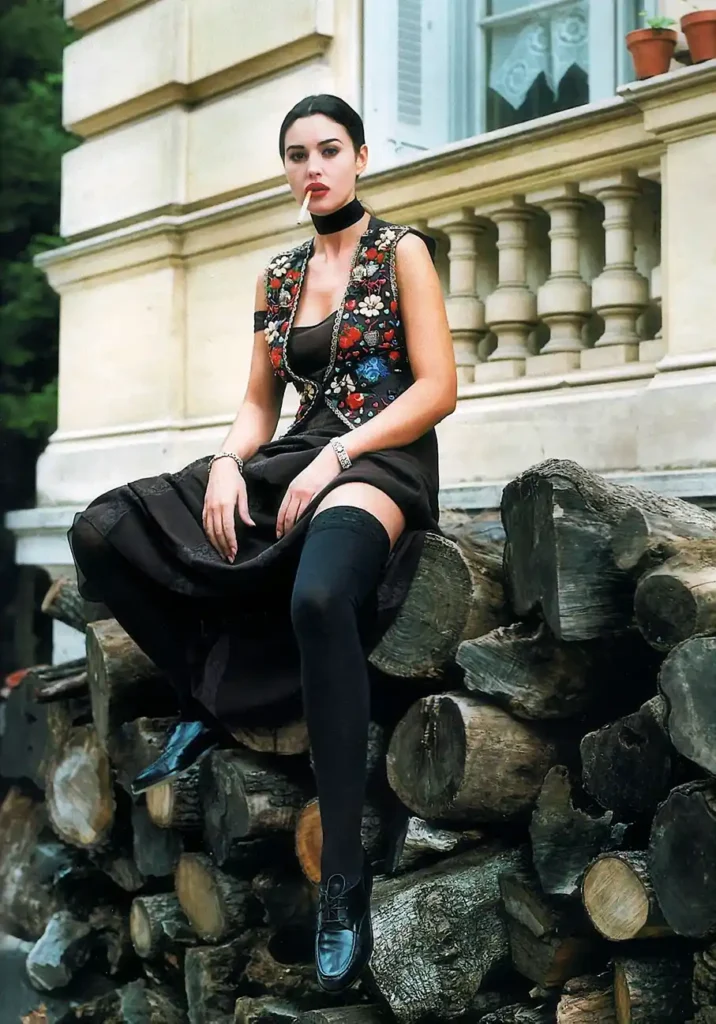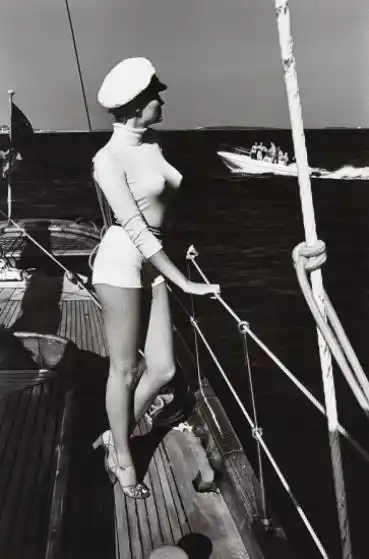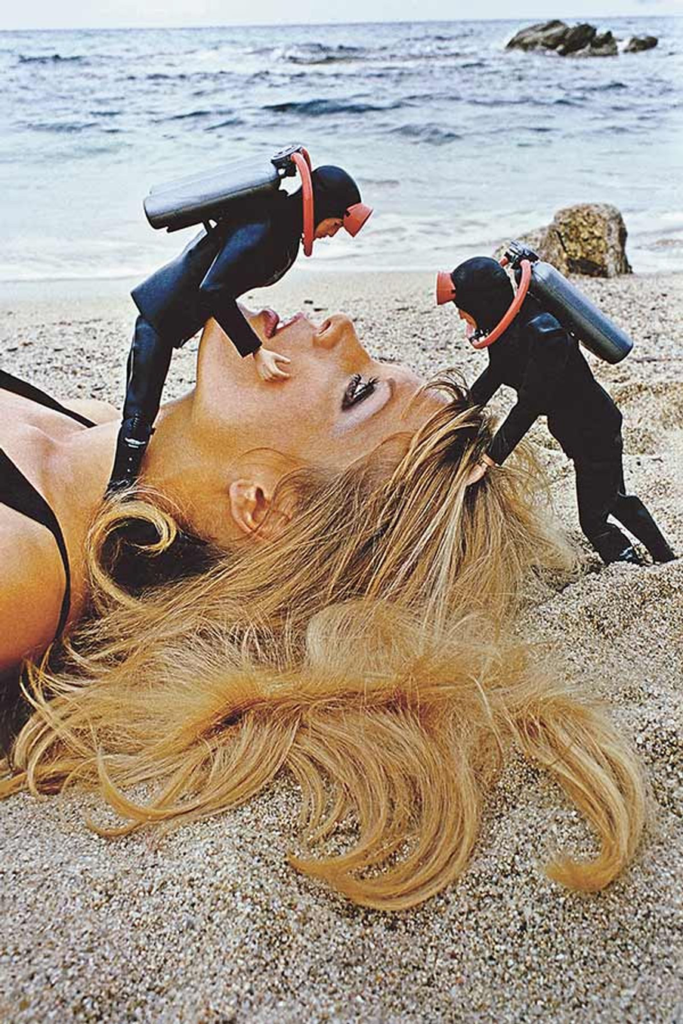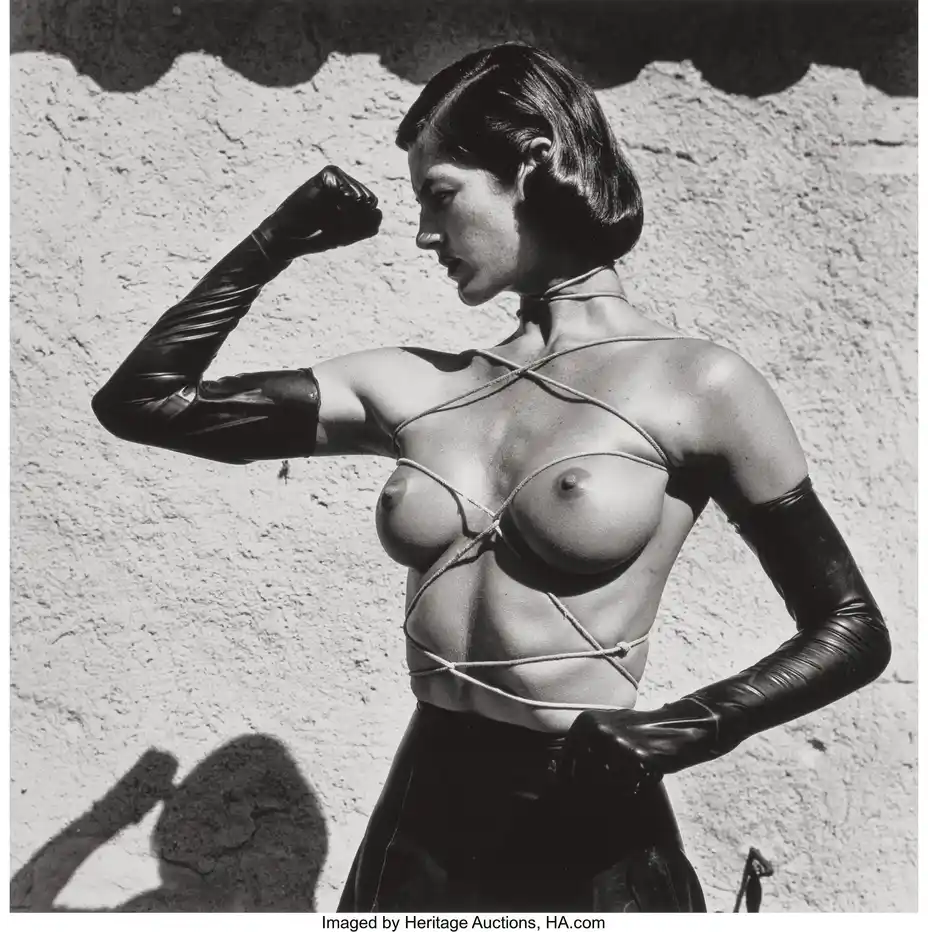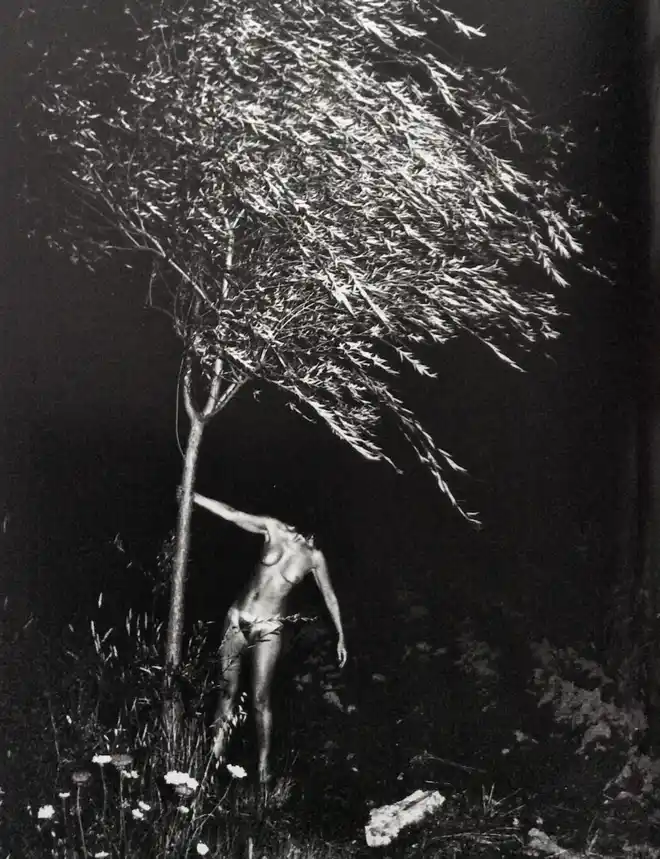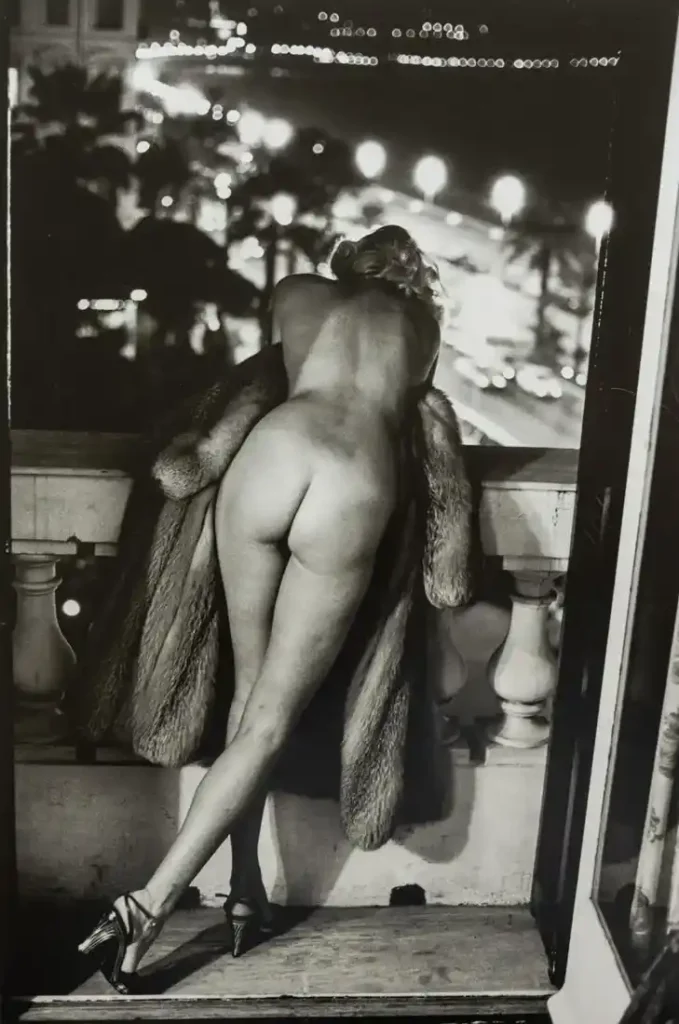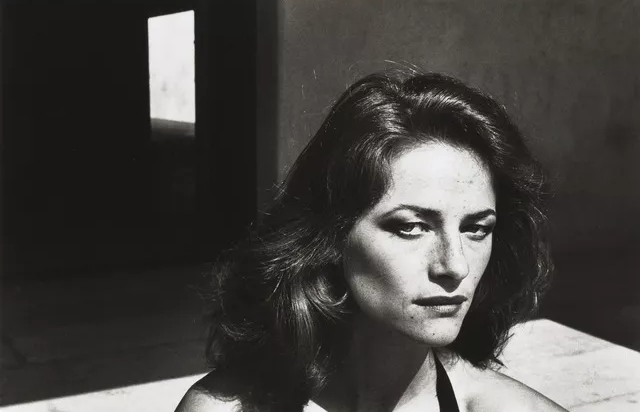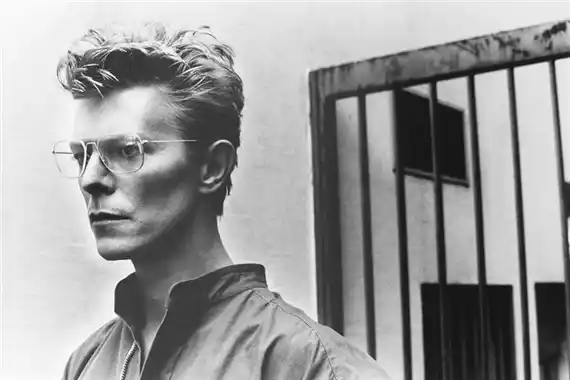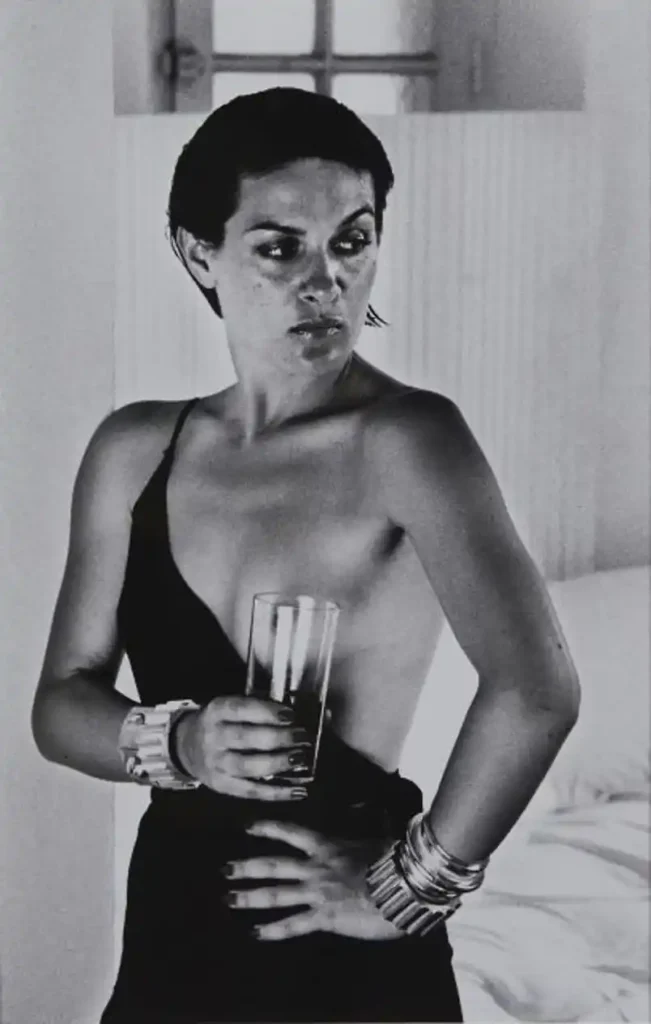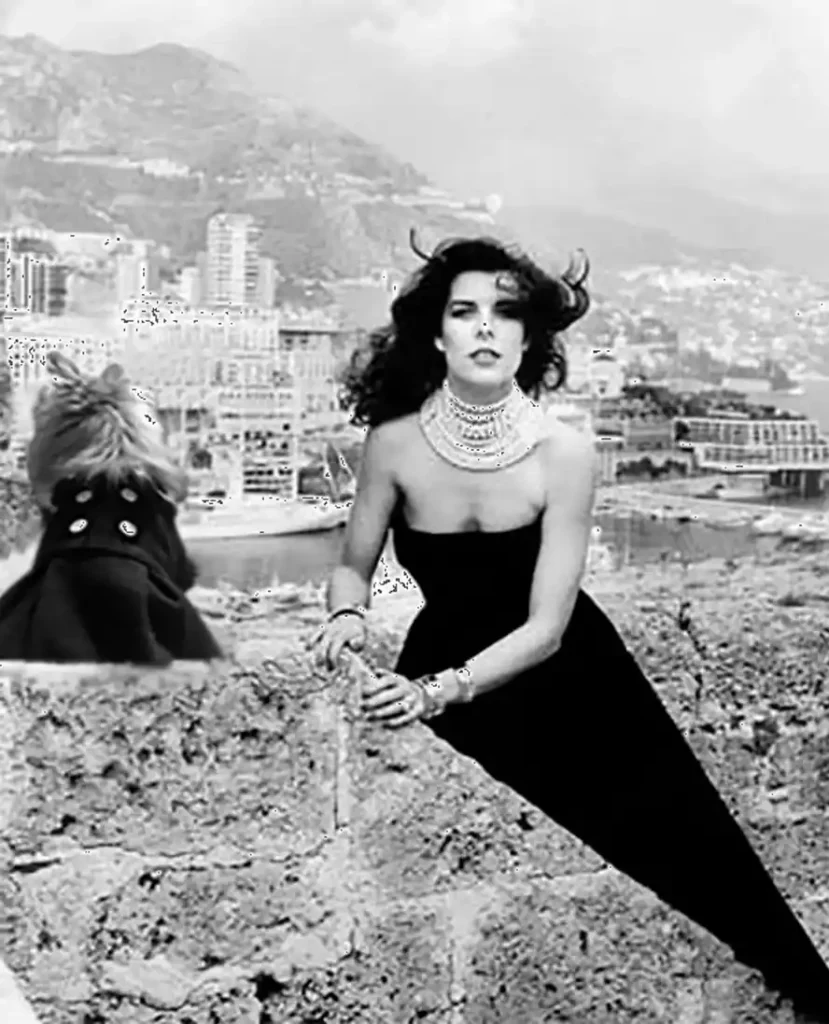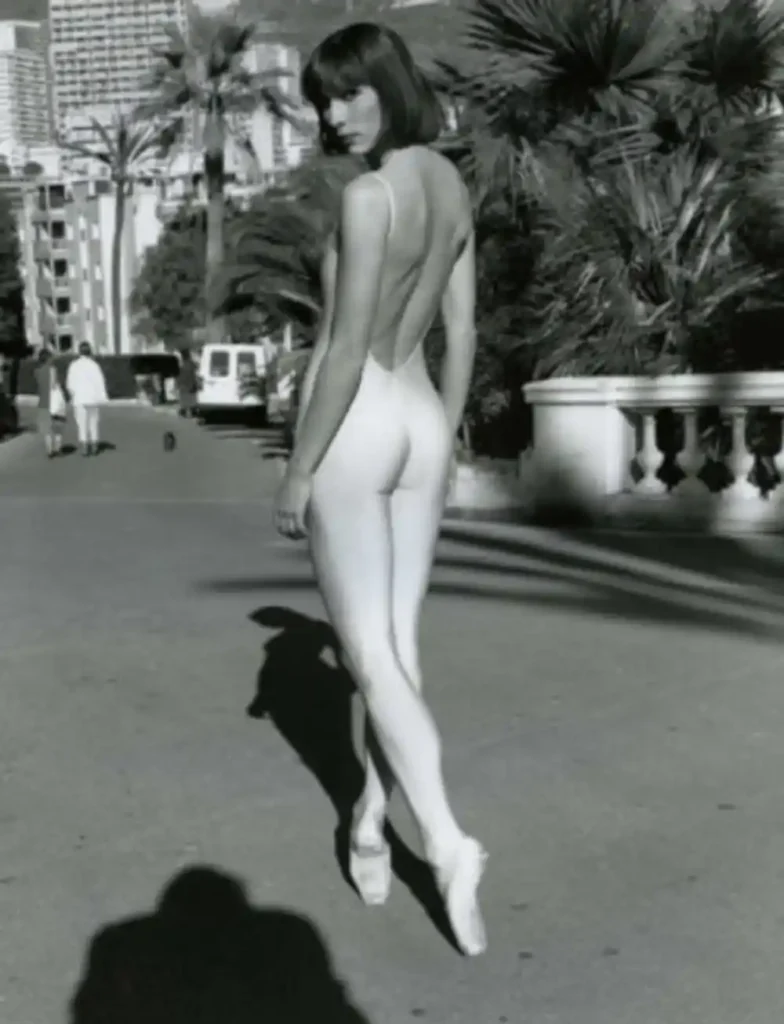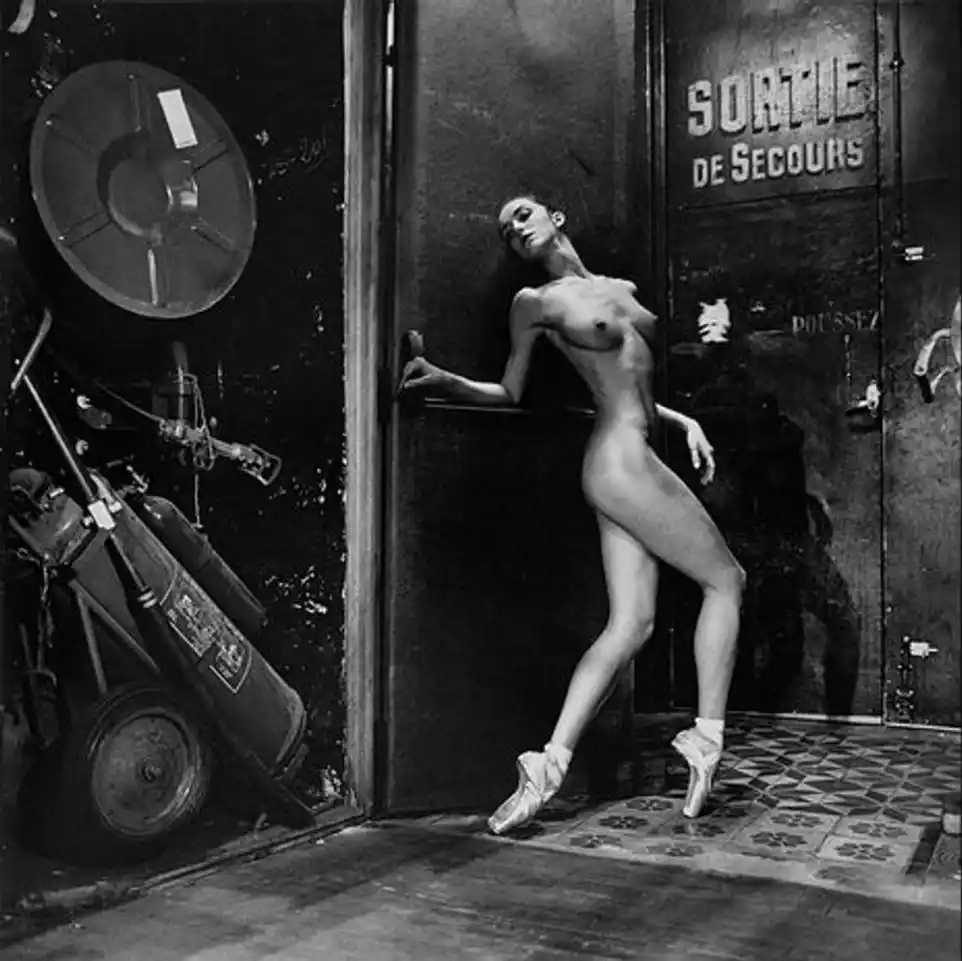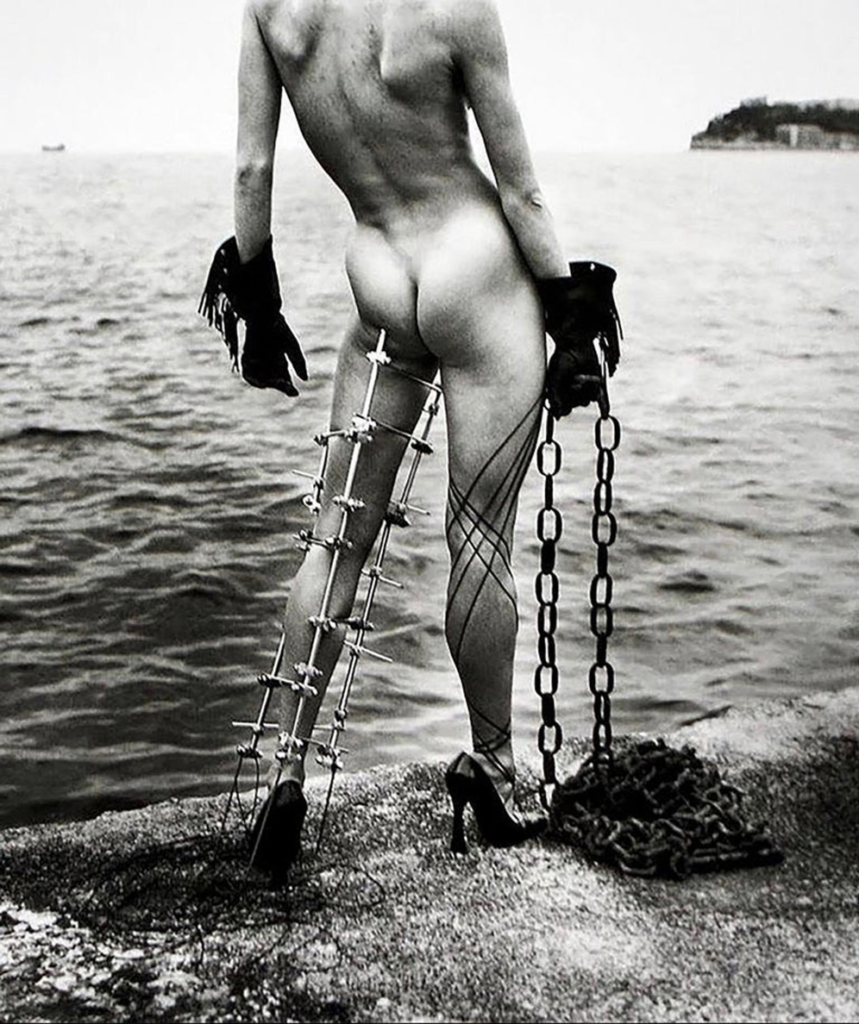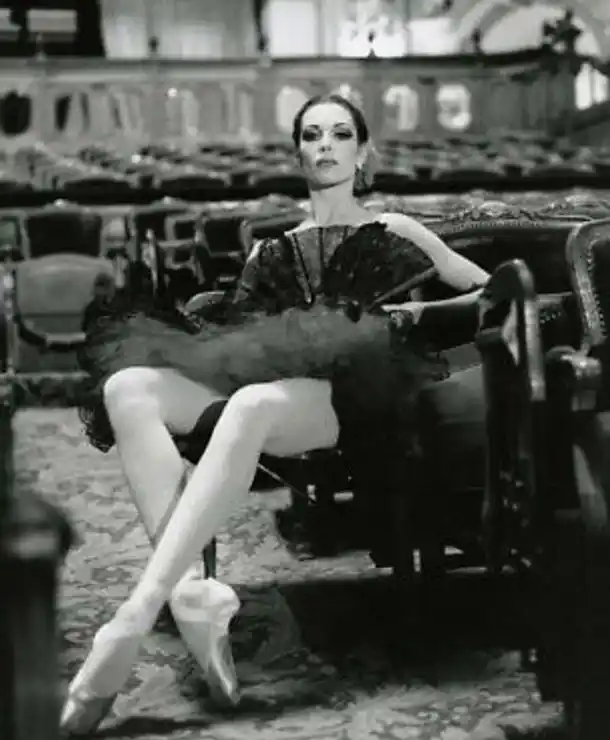Helmut Newton was a regular at the Cannes Film Festivals. The artificial atmosphere of luxury and celebrities, a pure fantasy for ‘less mortals’ these Festivals provided our protagonist with a dream subject. For him photograph was not here to report the reality but rather to blur the border between true and false, the reality and illusion. Between the witness and participant.
Newton also owned a villa in Ramatuelle. In fact the 1960s and 1970s were golden age of fashion photography. With the advent of ready-to-wear and the boom of the new clothing brands’ commercials, photographers were constantly on demand. Newton earned enough money to buy an apartment in Paris first and, in 1964 a house in the South of France where he and his wife June spent every summer. Newton shot his friends passing through but also June.
The period from 1981 to 2004, when he died in a car accident, became one of the most prolific and with no doubts, the freest of his career.
Monaco with its eternal construction sites, hotels, terraces served as the original backdrops for Newton’s fashion shoots. He took more and more liberties in his fashion photography, imposing his point of view on his clients. Nevertheless he kept his signature style characterised by compositional rigour, hieratic nature of the models and exclusion of any spontaneity. Creatively speaking, Newton’s Monaco years were his best.
And it’s here too where he took the numerous portraits of ‘beautiful people’, starts from the worlds of fashion, cinema, music and contemporary art: Davis Bowie, Isabelle Huppert, Paloma Picasso, Charlotte Rampling, Jude Law, Robert Evans, etc. Those he shot were ‘his own people’, as he himself admitted: ‘I am interested in a society that is visibly rich and whose functioning I understand, because I only photograph what I understand’. The result images are very similar to those made for the luxury brands’ campaigns. These portraits are styled and refuse ant psychologism.
He also covered the stars of the Ballet de Monte-Carlo and the princely family, especially his close friend, Princess Caroline.
The collaboration with the Ballet de Monte Carlo started in 1985 and continued until the death of Newton. Rather than attempting to capture the dancers’ movements, the photographer focused on their plasticity, thus extending the tradition of statuary through the photographic medium.
In Monaco there were no longer any constraints, Helmut followed only his intuition and inspiration. Inspiration the photographer drew from sunny, easeful way of life, a world of appearances and pretences on one side, and the surrealistic nights when landmarks disappear and the strange can happen while passions are set free, on the other.
